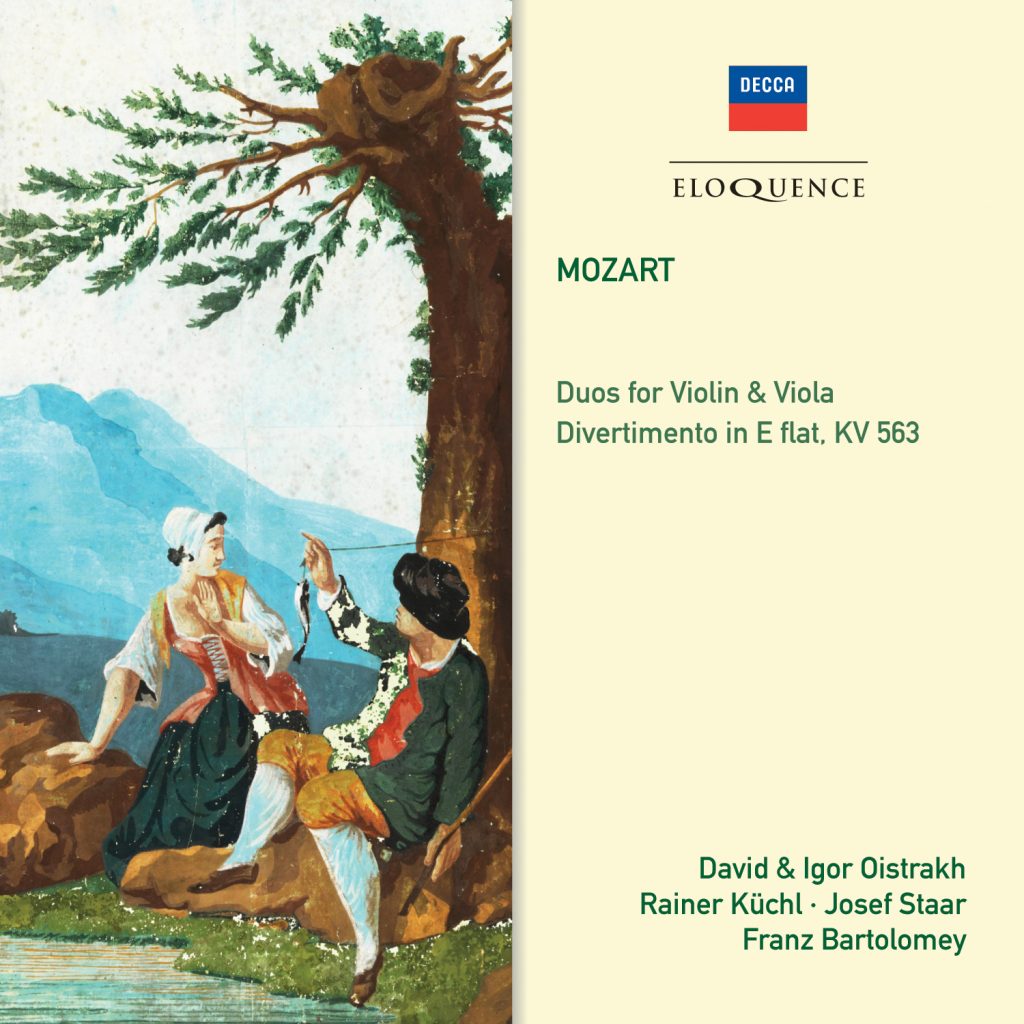Driven almost to distraction by debts, illness in the family – his baby daughter Theresia died on 29 July – and the indifference of a fickle public, Mozart often turned for financial succour to a fellow Freemason, Johann Michael Puchberg. This gentleman, whose name has come down through history solely because of his assistance to Mozart, deserves our double gratitude: it was for him that the composer wrote one of his loveliest, most satisfying works, the Divertimento in E flat major for String Trio, KV 563, completing it on 27 September 1788.
Mozart used the terms cassation, serenade and divertimento in a virtually interchangeable manner and because many of his works under these titles are relatively early and patently intended as entertainment music, it would be easy to think of KV 563 as following in their footsteps. His E flat major Divertimento is entertainment music, yes but entertainment of the highest order, for the delectation of the players and any connoisseurs lucky enough to be present.
Mozart may have depended on the kindness of friends but he could be equally generous with his time and energy. On a visit to his old Salzburg colleague, Michael Haydn, younger brother of Joseph, in the summer of 1783, he discovered his friend in a terrible pickle, too ill to finish a set of six duos for violin and viola which had been expressly ordered by his employer, Mozart’s former nemesis, Archbishop Hieronymus Colloredo. Haydn had managed to write duos in C, D, E and F; so Mozart quietly went off and came back two days later, having completed the set with duos in G and B flat. The G major has a particularly independent viola part; the B flat is perhaps closer to Michael Haydn’s style.
The performers of most of the program are – or were – leading members of the Vienna State Opera Orchestra and its independent concert wing, the Vienna Philharmonic. The G major Duo is played by the illustrious Ukrainian musician David Oistrakh (1908–74) and his son Igor (born 1931). In the late 1950s, they formed an acclaimed violin duo and in the 1960s David took up the viola which he had not played in public for 40 years, so that they could perform the Mozart Sinfonia Concertante. As a suitable disc filler for their Decca recording of this work, they specially learnt the Duo. Their style is a little more large-scale and deliberate than that of the Viennese players, making a nice contrast.
Both, the B flat major Duo and the Divertimento receive their first international release on CD.
WOLFGANG AMADEUS MOZART
Duo for Violin and Viola in G major, KV 423
Igor Oistrakh, violin
David Oistrakh, viola
Duo for Violin and Viola in B flat major, KV 424*
Rainer Küchl, violin
Josef Staar, viola
Divertimento for Violin, Viola and Cello in E flat major, KV 563*
Rainer Küchl, violin
Josef Staar, viola
Franz Bartolomey, cello
*FIRST INTERNATIONAL RELEASE ON CD
Recording Producers: Erik Smith, Ray Minshull (KV 423); Michael Haas (KV 424, KV 563)
Balance Engineers: Kenneth Wilkinson (KV 423); Stanley Goodall (KV 424, KV 563)
Recording Location: Decca Studios, West Hampstead, London, UK, 27 September 1963 (KV 423); Sofiensaal, Vienna, Austria, 16–22 May 1980 (KV 424, KV 563)
‘I can warmly recommend this radiant performance of radiant music’ (Divertimento) Gramophone

